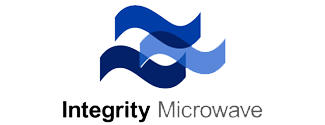Modern technology allowed cellular information to be faster, stronger, and more able to keep up with the demands of users. Unfortunately, there are locations and signal densities wherein processing information of these signals is not enough to satisfy users’ needs. In these cases, network owners and managers need to find a way to provide additional cellular coverage. Distributed antenna systems are a way to bolster cellular coverage and capacity by installing managed hubs and multi-band antennas precisely where demand is greatest.
These systems are composed of antenna nodes (also called radio heads) that serve as signal repeaters and are strategically placed around the target area. Each of the nodes is physically connected using cables to a communications hub which, in turn, is connected to the base station of the wireless carrier.
Benefits of Distributed Antenna Systems
Why should DAS be used instead of a single antenna? There are several reasons to invest in these systems, such as those below:
- It works in a limited space — If one needs additional cell coverage but don’t have enough space for a traditional cell tower, installing a DAS network is a good choice. The system won’t take up much room since each node must be placed in a different location instead of being grouped in one large area.
- It improves cell signal — In a large venue (such as a mall or a sports arena), people won’t enjoy good cellular signal if they’re sitting or standing far away from the single antenna. Having a DAS network will fix this since the strategically placed radio heads ensure that most people in the area have a direct line-of-sight channel with at least one antenna node.
- It can support multiple bands — DAS have the ability to provide multiple band coverage supplied by different wireless carriers. This is a great thing to have particularly if you need to increase cellular coverage in a large area, such as sports arenas or music festival venues.
Types of DAS
There are two main types of Distributed Antenna Systems categorized in terms of implementation: passive or active.
In passive Distributed Antenna Systems, the network obtains cellular signals from the antennas placed on the roof then distributes the signals throughout the area using leaky feeder cables. It’s called the passive approach since the network simply “leaks” the signal to the areas where radio heads are located. Since passive DAS does not use any electronic components between the antennas and base station, only a coaxial cable there is no amplification and the antennas gradually lose signal strength the further they migrate from the base station.
In active DAS, the network also gets cellular signals from roof-based antennas, but it distributes these signals by using fiber cables. Active-repeater amplifiers are located throughout the network and boost the signals that pass through them. An active setup is more commonly used when there is a large area to cover as remote hubs can be placed away from the base station.
DAS networks are ideal for places that are densely populated or frequently visited, such as malls, sports venues, commercial buildings, college campuses, hotels, and apartment buildings. Integrity Microwave in Argyle Texas provides high performance low profile DAS. They offer single band, dual band, trio band, quad band, and omni-directional DAS networks and can provide businesses in different venues with the right products and services.
Peninsula Technical Sales is the manufacturers’ representative firm for Integrity Microwave. Call us today at 650-965-3636 or visit our website. Let us help you create the best possible Distributed Antenna Systems configuration that matches your requirements and specifications.
Peninsula Technical Sales represents electronic equipment manufacturers and is proud to offer our services online and to the following cities and their surrounding areas: San Francisco, Santa Clara, San Jose, Fremont, Sacramento, Milpitas, and Santa Rosa.

